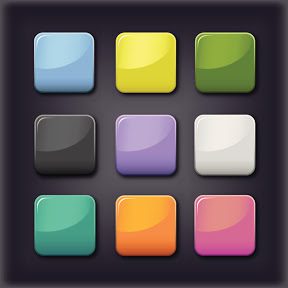We can easily download apps for our smartphones and computer systems from the Apple, Android and Microsoft app stores, usually for free or just a few dollars. Yet, when we need a new function or capacity for our learning efforts, there are almost no apps for sale. And if we call on our learning management system suppliers to add functions, they quote development fees that can run into the hundreds of thousands of dollars.
Learning is changing rapidly, so we need our technologies and methodologies to be agile and rapidly adaptable. Learning apps could help us try or beta test a new approach before making a major investment in time and resources.
Imagine if we had an open learning app format that allowed a CLO to select an app that would work safely and securely on top of and with most learning systems. That could have a powerful effect on the app marketplace, triggering inventions from a range of sources, including traditional LMS companies, small startups, even individuals with cool ideas that would support learning — much like the mix of mobile apps available to the public.
These learning apps are on my wish list:
Stretch assignment app: Employees on stretch assignments often have the most powerful development experiences, yet your LMS does not have a stretch assignment function. Imagine an app that could be downloaded for an employee on a stretch assignment that would provide daily questions, queries and collaboration points.
It might even ask the employee to take three pictures that day and comment about work “aha” moments. This could be a high-function app and cost $9 per person. And, we might have a stretch manager that could be downloaded to the LMS for $299 to provide executives with an overview of the current and planned stretch assignments for their team members.
Retirement coming app: Thousands of our boomer-aged employees are on the verge of retirement, often leaving suddenly with great knowledge and corporate data that we haven’t captured. What if we had an app that could be given to each employee who is within six months of retirement? It could structure the capture of formal and tacit knowledge, contacts and personal FAQs. I am sure the AARP would buy an ad on this app, subsidizing its cost.
Weave devices into the classroom app: The learners in a face-to-face classroom are often carrying and using one or two mobile devices. These may be tablets provided by the organization or their own smartphones. Imagine downloading an app to each tablet that would “weave” these devices together — regardless of platform — to allow the trainer and students to share content, shift the agenda and provide a backchannel for conversations. This could be free or cost $1 per device.
Video for learning app: Most LMS and LCMS systems do not have a robust process to handle indexing, metadata tagging and time updating for the massive number of videos employees upload. What if there were a video for a learning app that added a secure cloud layer of video management and worked with multiple LMS and content systems? Once again, if our various LMS systems had an open process, this app could be developed by YouTube or Amazon and work on top of our existing systems. Since video is rapidly evolving in our corporate settings, it would be safer to use an app model, rather than try to anticipate our needs for the next three years and build a hard-wired system.
Imagine a robust and ever-changing CLO app page, with apps for learners, designers, managers and, of course, apps for the CLO. Many of us would check that page frequently, read reviews, try a few on a test basis and even reach out to developers with ideas.
What if the universities and colleges training our next generation of learning professionals gave “build a learning app” assignments to students as projects with the expectation that successful apps would be in the app stores in weeks — not years?
Years ago, we imagined a perfect, single learning portal page for all learners and managers. Now, we are in the world of personalization, and the learning field deserves learning apps.
















